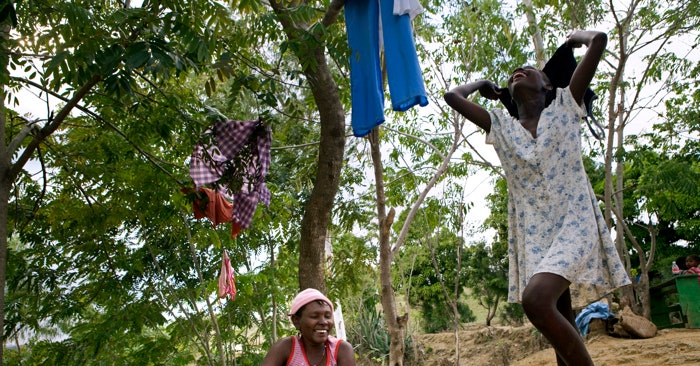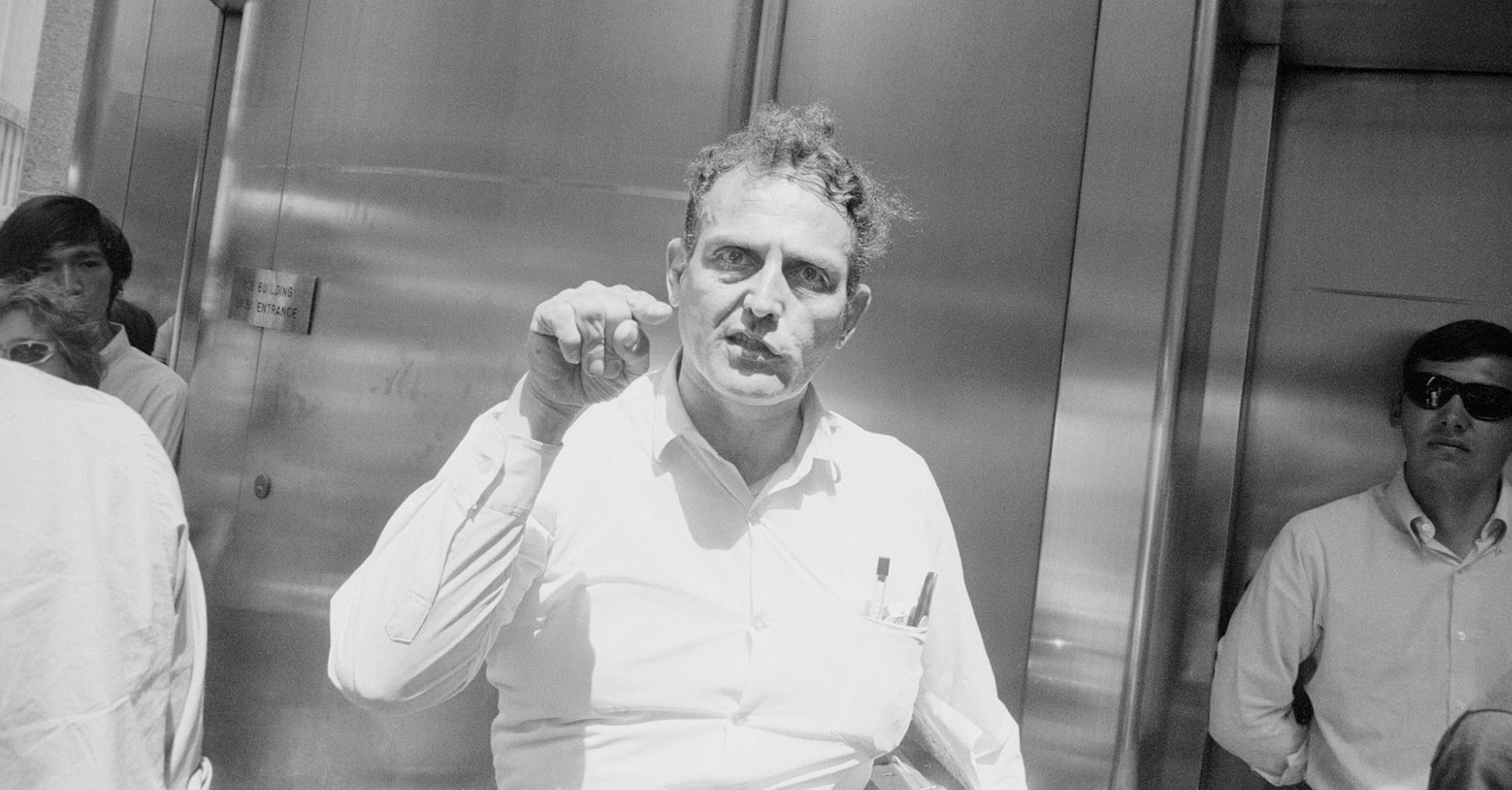Lubell, who joined Magnum in 2004 and assumed his post in 2006, came from a background in private equity. He describes his idea to sell the prints as “the 101 of business.” Magnum, he says, was a strong brand but had limited funds, and the changing media landscape — which involved dwindling photo assignments and a diminished licensing business, once Magnum’s traditional revenue streams — spelled “a perfect storm” for the organization. So Lubell looked around the co-op, he says, and asked himself, “What are the opportunities here?”
Category: Photojournalism
-
Revolutionizing Photojournalism, Again – ARTINFO.com
-

working…. | burn magazine
working….
it is getting cold here in Rio…fall has arrived…everyone complaining of the rain…temperature has dropped to a chilling 68F….i am wearing a long sleeved shirt, pants and shoe…
via burn magazine: http://www.burnmagazine.org/dialogue/2010/03/working/
i have been sick , scared, injured, and upset…long days turned into long nights often with no result…many moving parts and often with the gears grinding….it is very hard for me to look at the work…but, i must soon….i am not one of those photographers who come home at night and rush to the computer to see what i have done…quite the contrary…i hate to look….deep deep down inside i am assuming some good work….but any long term results seem now far far away….on top of it all, i must justify all of this to the editors who commissioned me to be here….i need an Advil…
-

Magnum Launches Fund to Support Haiti Coverage | Raw File
Magnum Launches Fund to Support Haiti Coverage
Magnum Photo Agency has established an internal fund to support long-form coverage of Haiti by its photographers for at least the next 12 months, says director Mark Lubell. “We had three photographers in Haiti shortly after the earthquake,” says Lubell, “
via WIRED: http://www.wired.com/rawfile/2010/02/magnum-launches-fund-to-support-haiti-coverage/
Mark Lubell believes Magnum’s presence is particularly important to Haiti coverage, because its photographers own the rights to their photos. “When you own the story,” he says, “you hang out and you take a much more in-depth look. You don’t just jump off a plane take pictures and go home. Not only is [Magnum’s approach] in-depth, but also the quality of the work is so high.”
-
IMPACT: An Online Exhibition « Independent Work « The 37th Frame
The IMPACT team wants to remind viewers of the important role photographers play around the world, so we asked participants to share images from a project where they had an impact or were impacted themselves.
-

Roger Tooth on the Saturation Point for Photojournalists « Prison Photography
Roger Tooth on the Saturation Point for Photojournalists
DISASTER PHOTOGRAPHY I ran across the University College Dublin’s Photography & International Conflict project this week. It operates out of UCD’s Institute for American Studies …
via Prison Photography: http://prisonphotography.wordpress.com/2010/02/23/roger-tooth-on-the-saturation-point-for-photojournalists/
I would have thought we are at saturation point for photojournalists, but then you have the colleges churning out thousands of graduates each year, so its all a bit worrying really.
-
Have you woken up to a world After Photography? | duckrabbit
Have you woken up to a world After Photography? — duckrabbit
Until we agree that it is intolerable to continue witnessing horrific events without exploring their causes and putting them in…
via duckrabbit: http://duckrabbit.info/blog/2010/02/have-you-woken-up-to-a-world-after-photography/
-
ZORIAH – War Photography, Meet Fashion Photography
War Photography, Meet Fashion Photography
I have been widely criticized for commercializing photojournalism and war photography since I appeared in the Warner Brothers television show “In Harms Way.” Since then I have been working hard on ways of making my work even more commercial. The bottom li
via ZORIAH – A PHOTOJOURNALIST AND WAR PHOTOGRAPHER’S BLOG: http://www.zoriah.net/blog/2010/02/war-photography-meet-fashion-photography.html
I would like to announce that I am beginning to take my career in a new direction. I am not now, nor will I ever give up photojournalism, but it is time to go far beyond the limits of the profession.
-
Heather McClintock – Conscientious
Heather McClintock has been taking photographs in Uganda for a few years now, covering the civil war in the northern part of the country.
-
Worth a Look: Jon Lowenstein in Haiti | dvafoto
he has photographed in a radically different way than what I have seen before from Haiti, but also the content of the images seems more considered to me. But of course it is a risky thing to photograph a “news” story in such a “limited” way.
-
Wedding Photojournalist Association Provides Educational Grants For NPPA Event
The National Press Photographers Association announced today that the Wedding Photojournalist Association has generously provided NPPA with funds sufficient to support the tuition costs of 20 attendees to the upcoming Northern Short Course to be held March 11 – 13, 2010 in New Brunswick, NJ.
Link: Wedding Photojournalist Association Provides Educational Grants For NPPA Event
-
Don McCullin | Photography review | The Guardian
Don McCullin | Photography review
This career retrospective shows that time and familiarity have not dulled the impact of photojournalist Don McCullin’s astonishing combat photography, writes Andrew Pulver
via the Guardian: http://www.guardian.co.uk/artanddesign/2010/feb/10/don-mccullin-review
It feels like a state honour: the photojournalist Don McCullin, one-time employee of the Observer and the Sunday Times, is being dignified with a retrospective at a national museum. The venue – the new Libeskind-designed Imperial War Museum North – tells you the emphasis is on his astonishing combat work.
-

adjustment layer: Edward Linsmier
Edward Linsmier
Edward Linsmier is my first guest blogger, he is a photojournalist based out of southern florida. Edward has spent a lot of tim …
Link: http://adjustmentlayer.blogspot.com/2010/02/edward-linsmier.html
Edward Linsmier is my first guest blogger, he is a photojournalist based out of southern florida. Edward has spent a lot of tim working and shooting in Haiti over the past several years and has a close relationship with the country and it’s people. When the earth quake happened I knew he would go down so I contacted him about doing this for me. Here is a story from Edward as well as some heart stopping images.
-

AMERICANSUBURB X: THEORY: "Standing on the Corner – Reflections Upon Garry Winogrand's Photographic Gaze – Mirror of Self or World? Part II" (1991)
Standing on the Corner – Reflections Upon Garry Winogrand’s Photographic Gaze – Mirror of Self or World? Part II (1991)
Whenever I see it, I immediately hear a voice singing, “Standing on the corner watching all the girls go by.” Yes, it is a sexist work. But that is a fact about Winogrand we must face and accept, if we are to honestly assess his picture-making.
Part IIvia AMERICAN SUBURB X: http://www.americansuburbx.com/2010/02/theory-standing-on-corner-reflections_08.html?utm_source=feedburner&utm_medium=feed&utm_campaign=Feed%3A+Americansuburb+%28AMERICANSUBURBX%29
About looking and watching. That is what so many of Winogrand’s pictures are about—about his looking and watching. And that is why I think, in clear disagreement with most other writers on Winogrand, that Women are Beautiful (1975) is the quintessential Winogrand book. Whenever I see it, I immediately hear a voice singing, “Standing on the corner watching all the girls go by.” Yes, it is a sexist work. But that is a fact about Winogrand we must face and accept, if we are to honestly assess his picture-making. Of his books it is the most vibrant and vital; it is the one that most consistently reveals an honest, deep, real commitment.
-
Haiti Photo Workshops Face Online Backlash | Raw File
Haiti Photo Workshops Face Online Backlash
Images of luxury cruise liners docking at the Haitian port of Labadee immediately following the earthquake raised an uproar. Now the decision of two photographers to hold workshops amidst the chaos and death are stirring online debate on the ethics of pho
via WIRED: http://www.wired.com/rawfile/2010/02/haiti-photo-workshops-face-online-backlash/
Images of luxury cruise liners docking at the Haitian port of Labadee immediately following the earthquake raised an uproar. Now the decision of two photographers to hold workshops amidst the chaos and death are stirring online debate on the ethics of photojournalism.
-
Cappuccino and Cameras, in the Hands of a Master – The Digital Journalist
I’d also seen samples of his work from a dozen stories, as varied as a LIFE photographer’s world could be, including one of the first sets of pictures of the ‘Great Cats of Africa.’ It was another time altogether from the world we know today, and so I was all the more pleased to be able to taste a great cappuccino made in the cozy kitchen of John Dominis. I’d known of John for a long time, arriving as I did at the end of the LIFE weekly, but it wasn’t until he became the picture editor of People in the ’70s that I really got to know him.
Link: Cappuccino and Cameras, in the Hands of a Master – The Digital Journalist
-
Shaped by War: Photographs by Don McCullin
Shaped by War: Photographs by Don McCullin | Photography review
The great war photographer Don McCullin talks to Sean O’Hagan ahead of the major retrospective of his work in Manchester
via the Guardian: http://www.guardian.co.uk/artanddesign/2010/feb/07/don-mccullin-shaped-war-review
“The day I came across that boy was a killer day for me. There were 800 dying children in that schoolhouse. The boy is near death. He is trying to support himself. And to see this kind of pathetic photographer appear with a Nikon around his neck…”
He falls silent again for a moment. “Some times it felt like I was carrying pieces of human flesh back home with me, not negatives. It’s as if you are carrying the suffering of the people you have photographed.”
-
Why Not Images of Haiti — By Haitians? – The Digital Journalist
What was missing from this reportage—both still and moving—was the opportunity for Haitians to tell their own stories. One blogger stated on Internet site Newspaper Death Watch, “When Diane Sawyer arrived on the scene she got to practice her O-Level French but, apart from that, there was nothing she said that could not have been said better, more concisely, more urgently, by anybody whose house had been reduced to splinters and rubble and whose family members were buried under it all.”
Link: Why Not Images of Haiti — By Haitians? – The Digital Journalist
-
Thoughts of a Bohemian » Photojournalism’s boutiques
What happens when photographers cannot sell images anymore ? What do they do if magazines do not pay for their coverage? Well, they turn around and start selling to other photographers. Not images, but workshops.
Link: Thoughts of a Bohemian » Blog Archive » Photojournalism’s boutiques
-
PDNPulse: Haiti Aftermath Coverage: A Live Chat
Photographers Chris Hondros, Timothy Fadek and Willie Davis will share images they shot in the first week after the Haitian earthquake and discuss press coverage of the disaster during a live chat hosted by BagNewsNotes, the politics and photography blog, this Sunday from 3 to 4:30pm EST.
-
Nervous, humbled and excited.

